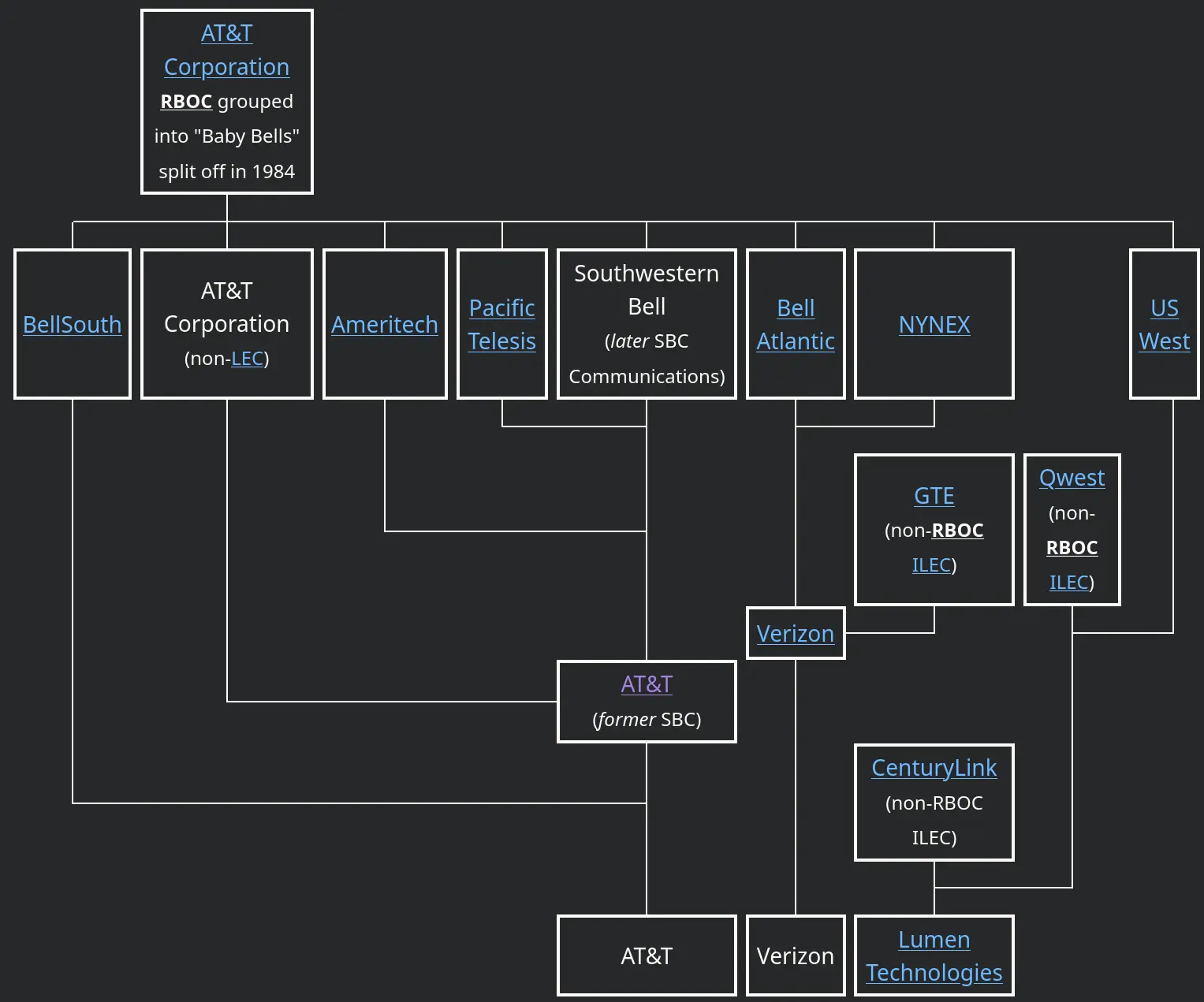You’re telling me there is no Walla Walla, England?
baltakatei
/ˈbɑːltəkʊteɪ/. Knows some chemistry and piping stuff. TeXmacs user.
Website: reboil.com
Mastodon: [email protected]
- 12 Posts
- 77 Comments

 10·2 months ago
10·2 months agoOr authors could preëmptively declare their works to be in the public domain upon their death.
I wish Creative Commons had a license like that. Something like
CC PDD(Public-Domain-on-Death) which would activate upon the creator’s death, allowing them and publishers to freely monetize their work while they’re alive, but which would release the work into the public domain immediately after.It might even incentivize music and book publishers to get their artists health insurance. 😃
PLATO: An automobile is craft with an internal combustion engine, crankshaft, and wheels.
DIOGENES wheels in a HONDA GX630 PRESSURE WASHER
DIOGENES: Behold! An automobile!
deleted by creator

 1·3 months ago
1·3 months agodeleted by creator

 161·3 months ago
161·3 months agodon’t let them slowly re-consolidate in the following 20 years
I too remember how AT&T was broken up only for most of its Baby Bells to remerge back into Ma Bell.

To prevent this for future breakups, I say the content and services sold by big tech should be made competitively compatible and interoperable via nullification of DRM laws; people buy music and movies and cloud storage; let them legally move their purchases to any competitor and big tech companies will break up naturally as local competitors emerge from people who dislike big tech for their own reasons. Monopolies cannot be trusted to lower prices for content and services. Legally nullifying DRM is like the FCC telling customers in 1968 that it was finally okay to ignore the “Bell equipment only” legal warning that had kept them locked into leasing their telephone sets for usurious amounts from AT&T for decades. A few years later, in 1982, AT&T was broken up. AT&T is almost a total monopoly again, but phones remain interoperable.
If tech giants such as Google cannot be broken up, then their services should be required to be compatible and all data exportable to competitors. See the EFFʼs “Competitive Compatibility” concept. Buy a movie off Google’s YouTube but Google misbehaves? It must be exportable to a market competitor that you do support. Don’t like how Google handles your email? You should be able to switch your email address to a competitor just like you can change phone companies without losing your phone number.
Basically, if the US Federal government cannot discipline monopolies by breaking them up directly, they should break up the moats and walled gardens the monopolies built to keep customers locked in to maintain their monopolies. See Chokepoint Capitalism by Rebecca Giblin and Cory Doctorow.
Based on my cheatsheet, GNU Coreutils, sed, awk, ImageMagick, exiftool, jdupes, rsync, jq, par2, parallel, tar and xz utils are examples of commands that I frequently use but whose developers I don’t believe receive any significant cashflow despite the huge benefit they provide to software developers. The last one was basically taken over in by a nation-state hacking team until the subtle backdoor for OpenSSH was found in 2024-03 by some Microsoft guy not doing his assigned job.
Imagine if a lost Spanish armada finally arrived at Florida, centuries late, musket-wielding conquistadors raiding a coastal naval academy while a prominent political VIP was giving a speech, taking them hostage like Hernán Cortés did with Moctezuma II (Aztec Empire) or Francisco Pizarro with Atahualpa (Inca Empire).
I think it involved a planet called …
spoiler
… Sky’s Edge, if I recall correctly. Except the “new tech” was not FTL (not a thing in Revelation Space canon) but the practice of ejecting a significant fraction of hibernating colonists and their supplies to buff their deceleration ability in order to hold higher interstellar velocity for longer so as to get a few years “edge” in lead time over other generation ships. All to enable the traitorous ship of the generation ship fleet to raid planetary resources sooner to build up military forces to raid the slower latecomers.
In fact, electric vehicles have been common once before. In the early years of the twentieth century, there were three fundamentally different automobile technologies battling for supremacy, and electric cars held their own against competition from steam-and gasoline-powered alternatives, as they are mechanically much simpler and more reliable, as well as quiet and smokeless. In Chicago they even dominated the automobile market. At the peak of production of electric vehicles in 1912, 30,000 glided silently along the streets of the USA, and another 4,000 throughout Europe; in 1918 a fifth of Berlin’s motor taxis were electric.
The drawback of electric cars with their own onboard batteries (rather than trains or trolleys taking a continuous feed from a power line over the track) is that even a large, heavy set cannot store a great deal of energy, and once depleted the battery takes a long time to recharge. The maximum range of these early electric vehicles was around a hundred miles, (Ironically, about 100 miles is still the maximum range for modern electric cars: technological improvements in battery storage and electric motors have been perfectly offset by an increase in car size and weight, and drivers of electric vehicles suffer from “charge anxiety.”) but this is farther than a horse and in an urban setting is more than adequate. The solution is, rather than waiting for the battery to be recharged, you can simply pull into a station for a quick battery pack exchange: Manhattan successfully operated a fleet of electric cabs in 1900, with a central station that rapidly swapped depleted batteries for a fresh tray.
From The Knowledge (2014) by Lewis Dartnell, chapter 9 “Transport”. Cited works for the history of electric cars are:
- Crump, Thomas. 2001. A Brief History of Science: As Seen through the Development of Scientific Instruments. London: Constable & Robinson.
- Edgerton, David. 2007. The Shock of the Old: Technology and Global History Since 1900. New York: Oxford University Press.
- Brooks, Michael. 2009. “Electric Cars: Juiced Up and Ready to Go.” New Scientist, July 20: 42–45
- De Decker, Kris. 2010. “The Status Quo of Electric Cars: Better Batteries, Same Range.” Lowtech Magazine, May 3.
- Madrigal, Alexis. 2011. Powering the Dream: The History and Promise of Green Technology. Cambridge, MA: Da Capo Press.
So, you’re telling me my plan to measure atmospheric oxygen isotope trends over geologic time by grinding up sharks is bust?

 4·3 months ago
4·3 months agoWe could probably spin it around and give a tiny tax break for those who vote.
Now you’re talking!
Make tax refunds and all tax write-offs contingent on proving you voted. >:D

 3·3 months ago
3·3 months agoand then ends it, always leaving you wanting more
After several years of reading, I have realized that most of his books fall into the “Status Quo” genre, much like Marvel movies in which superheroes are cops that work to prevent relatable characters or governments from falling too out of sync with reality. The second their dystopian speculations start to imagine a society better off (due to redistribution of concentrated power or wealth), they immediately end.
Diamond Age (1994): corporations control society by controlling the centralized Feeds that supply matter compilers, justifying their monopoly by saying they keep society stable. MC publishes blueprints for compiling your own Feed. Story ends.
Anathem (2008): The government executes most scientists en masse and imprisons most survivors because technology was too disruptive 3000 years ago. A new global disaster forces the release of the scientists so they can wield ancient technology to solve the crisis. Story ends.
Cryptonomicon (1999) / The Great Simoleon Caper (1994): Some cryptographers think Bitcoin is a good idea even if it might topple governments. They publish it. Story ends.
Termination Shock (2021): Climate change can be solved by billionaires by getting governments addicted to shooting sulfur into the atmosphere. The story ends basically as soon as the operation begins.
Seveneves (2015): The moon blows up, forcing a crash course construction of a modern Noah’s Ark in the form of a fleet of spaceships in low Earth orbit. Eccentric billionaires sacrifice themselves to make the project work to save seven genius women who rebuild society with eugenics and a racial caste system. They discover some pre-disaster survivors whose culture is incompatible with the new society. Talks begin for reïntegration. Story ends.
Fall (2019): People upload and emulate their brains into datacenter computers. The first rich people to upload themselves gain an enormous first mover advantage in the digital afterlife and control the minds of newcomers whose surviving families pay ludicrous amounts of money to keep the dead billionaire-controlled Bitworld running. The system keeps running smoothly until the admin with the credentials to shut everything down dies, is uploaded, defeats the incumbent dead billionaire, thus making the world more equitable. Story ends.
The closest thing to an exception I can find is Atmosphæra Incognita (2014; part of Hieroglyph: Stories and Visions for a Better Future), in which a billionaire fights environmental regulations and NIMBY pushback to build a 20-kilometer steel tower to reduce space launch costs by acting as scaffolding for a mass driver. Although the story portrays most people as against the construction of such an audacious structure, and although the main beneficiaries are corporations wealthy enough to purchase space on the tower to install equipment, if you weigh your definition of “society” towards billionaires and their company org charts, then the story is about breaking the Status Quo (of NIMBY California landowners).
I agree, but Earth’s solarpunk phase doesn’t start for another few millennia. We’re still in the era where factory farms still exist.

 41·4 months ago
41·4 months agoIf he doesnʼt die from COVID.
If battery technology werenʼt still stuck in the Vietnam War era, 2-second rapid charging would require something like a thick boi USB-B cable to satisfy everyoneʼs desire to also use their phone as a tazer/hand grenade/flying drone/cardiac defibrillator/space heater.

 2·4 months ago
2·4 months agoThe Aranet4 runs on two AA batteries and the smartphone apps are still well-supported. The apps also support CSV export of trend data which is nice. In addition to CO2 ppm, it also records temperature, air pressure, and relative humidity (these other readings are probably used to adjust the CO2 sensor readings to account for temperature/humidity/air pressure conditions). I carry one of these with me while traveling and its high alarm beep (I have it set to sample every 60 seconds) is a convenient reminder to circulate air or consider wearing a mask if I am in a public space. The air pressure reading can be used as a crude altimeter, especially if you have two of the devices: one in a stationary location and another on your person as you take a hike; subtract the two values and you get a pressure difference that is a function of elevation.

 1·4 months ago
1·4 months agoReminds me of a quote from Galactic North (2006) green marking the start of a galaxy-wide disaster (terraforming bots making the galaxy terrifically habitable).
It was impossible for stars to shine green, any more than an ingot of metal could become greenhot if it was raised to a certain temperature. Instead, something was veiling them – staining their light, like coloured glass. Whatever it was stole energy from the stellar spectra at the frequencies of chlorophyll. Stars were shining through curtains of vegetation, like lanterns in a forest. The greenfly machines were turning the Galaxy into a jungle.




Utah: Monticello (Italian, but locally pronounced “monta sell-oh”)